Lissencephaly-1 mutations enhance traumatic brain injury outcomes in Drosophila
- PMID: 36683334
- PMCID: PMC9991514
- DOI: 10.1093/genetics/iyad008
Lissencephaly-1 mutations enhance traumatic brain injury outcomes in Drosophila
Abstract
Traumatic brain injury (TBI) outcomes vary greatly among individuals, but most of the variation remains unexplained. Using a Drosophila melanogaster TBI model and 178 genetically diverse lines from the Drosophila Genetic Reference Panel (DGRP), we investigated the role that genetic variation plays in determining TBI outcomes. Following injury at 20-27 days old, DGRP lines varied considerably in mortality within 24 h ("early mortality"). Additionally, the disparity in early mortality resulting from injury at 20-27 vs 0-7 days old differed among DGRP lines. These data support a polygenic basis for differences in TBI outcomes, where some gene variants elicit their effects by acting on aging-related processes. Our genome-wide association study of DGRP lines identified associations between single nucleotide polymorphisms in Lissencephaly-1 (Lis-1) and Patronin and early mortality following injury at 20-27 days old. Lis-1 regulates dynein, a microtubule motor required for retrograde transport of many cargoes, and Patronin protects microtubule minus ends against depolymerization. While Patronin mutants did not affect early mortality, Lis-1 compound heterozygotes (Lis-1x/Lis-1y) had increased early mortality following injury at 20-27 or 0-7 days old compared with Lis-1 heterozygotes (Lis-1x/+), and flies that survived 24 h after injury had increased neurodegeneration but an unaltered lifespan, indicating that Lis-1 affects TBI outcomes independently of effects on aging. These data suggest that Lis-1 activity is required in the brain to ameliorate TBI outcomes through effects on axonal transport, microtubule stability, and other microtubule proteins, such as tau, implicated in chronic traumatic encephalopathy, a TBI-associated neurodegenerative disease in humans.
Keywords: Drosophila melanogaster; Lissencephaly-1; Patronin; nudE; genome-wide association study; microtubule; neurodegeneration; traumatic brain injury.
© The Author(s) 2023. Published by Oxford University Press on behalf of the Genetics Society of America. All rights reserved. For permissions, please e-mail: journals.permissions@oup.com.
Figures
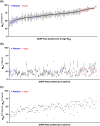

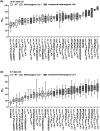
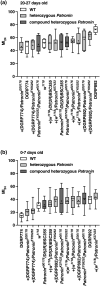

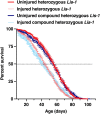
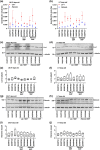

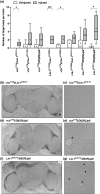
Similar articles
-
Regulation of dynein localization and centrosome positioning by Lis-1 and asunder during Drosophila spermatogenesis.Development. 2012 Aug;139(16):2945-54. doi: 10.1242/dev.077511. Epub 2012 Jul 4. Development. 2012. PMID: 22764052 Free PMC article.
-
Patronin regulates the microtubule network by protecting microtubule minus ends.Cell. 2010 Oct 15;143(2):263-74. doi: 10.1016/j.cell.2010.09.022. Cell. 2010. PMID: 20946984 Free PMC article.
-
Loss of the Antimicrobial Peptide Metchnikowin Protects Against Traumatic Brain Injury Outcomes in Drosophila melanogaster.G3 (Bethesda). 2020 Sep 2;10(9):3109-3119. doi: 10.1534/g3.120.401377. G3 (Bethesda). 2020. PMID: 32631949 Free PMC article.
-
The role of cytoplasmic dynein in the human brain developmental disease lissencephaly.Biochim Biophys Acta. 2000 Mar 17;1496(1):89-98. doi: 10.1016/s0167-4889(00)00011-2. Biochim Biophys Acta. 2000. PMID: 10722879 Review.
-
Drosophila models of traumatic brain injury.Front Biosci (Landmark Ed). 2020 Jan 1;25(1):168-178. doi: 10.2741/4801. Front Biosci (Landmark Ed). 2020. PMID: 31585884 Review.
References
Publication types
MeSH terms
Substances
Grants and funding
LinkOut - more resources
Full Text Sources
Medical
Molecular Biology Databases
Miscellaneous

